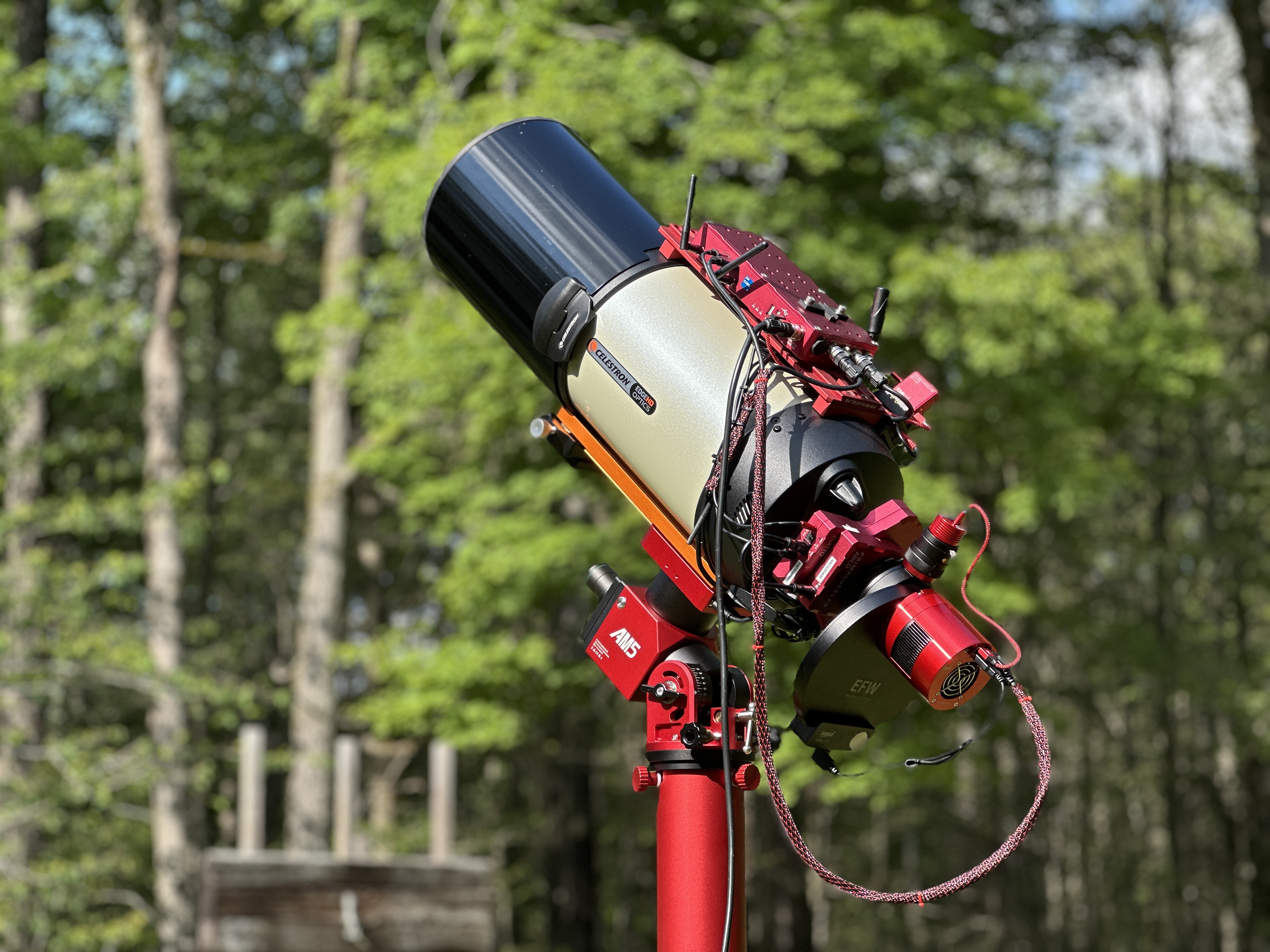Himanshu Pandey:
V:
I would not bother spending money on the F/7 reducer. It significantly reduces the sharpness and optical correction (ha, get it- reduces???). Some of your images state you have a 6200MM, if I'm correct, and you have immediate access to that camera, I would just use the 6200 on it at F/10 and bin 2x.
The 8HD can't fully illuminate Full Frame (about 92% of the field), but it corrects perfectly out to the edges of the baffle tube. You have ROI on the 6200, so just crop out the corners. Or you can just bin the 2600, and get the same performance with a smaller field of view. In my experience it's a much more capable scope at F/10 vs F/7, the tradeoff of lower resolution for "slightly" higher signal isn't worth 400 USD to me. I'd rather be seeing limited than spot size limited.
F/10 isnt that bad either, just expose longer per sub, and take more data per target, dither wide and drizzle when stacking and you'll have yourself a really sharp image.
The reducer for these scopes gets no love. I think it works fairly well but I am a beginner and easily impressed.
I consistently see average star HFR (as reported by NINA) to be below 2.4 when using the reducer and it goes up to around 2.8 when back in F10. I'm in a bortle 7 area but I don't know whether the light pollution affects star HFR and don't have a reference to guage the performance but if star HFR is a good measure for sharpness then it seems to improve with the reducer, given the 90% or so crop required to chop out the elongated stars along the edges.
It gets no love because it likely hasn't seen an update since huge pixel CCD's were the main cameras in the early 2010s. The current C8 Edge HD at F/10 can correct out to the edges of the baffle tube, which is nearly large enough to fully illuminate a full-frame sensor, minus slight corner vignette. At F/7 it struggles to correct an APS-C sized circle and has intense light drop-off towards the corners of the field, despite them being un-obstructed.
HFR, or Half-Flux Radius, uses star size in pixels versus resolution in arc-seconds, on a system with constant objective aperture, as focal length increases, HFR increases, without regard to seeing, exponentially. FWHM takes star size relative to sampling and seeing in arc-seconds and is superior for measuring the angular resolution of an image/night with accuracy.
You can derive a loose angular resolution from your HFR by taking the sampling rate
((Pixel Size divided by Focal Length) • 206.265) • HFR. Using the 2600's values for sampling on F/7 (0.55"/px) and F/10 (0.38"/px) times your given HFR values, we find that
F/7 is 1.32, and F/10 is 1.064, a big difference in scale resolution from F/7 to F/10. Double that for full diameter. (2.64" vs 2.168", huge difference, F/10 is ~18% higher resolution despite both sampling scales being below the ~.6" resolving limit.) I could be slightly wrong about this though, as there are some concepts I'm still working on understanding, and several factors affecting resolution that are not taken into consideration by (#"/px)*HFR*2 calculations, like seeing, distortion, and optical abberations, etc.
@Eric Emmons I understand the planning aspect of this, my imaging train was an absolute mess to figure out.
I feel the same way about my reducer. I'd say get some use out of it for a little while as you develop your imaging tactics with the 8HD, then push it back to F/10 for resolution down the road.
If you go the permenant reducer route, Optec makes a .62x reducer that has higher optical performance, but requires special adapters that I'm not sure would interface well with the rest of the imaging train, unless they have already made adapters.
I would maybe see if Starizona is going to release some goodies in the future, their reducers are legendary.


